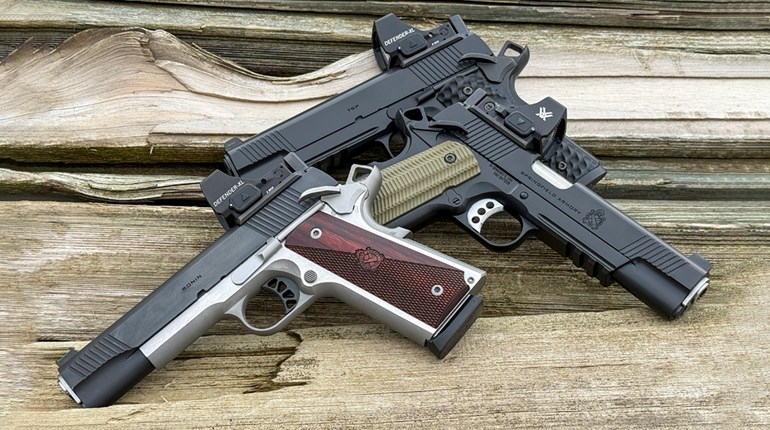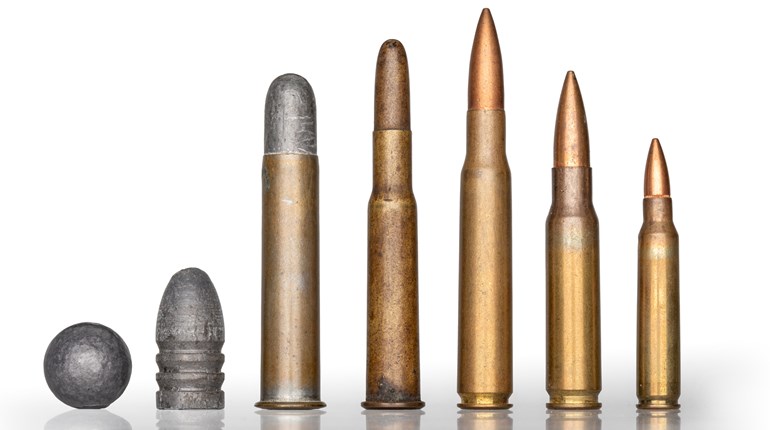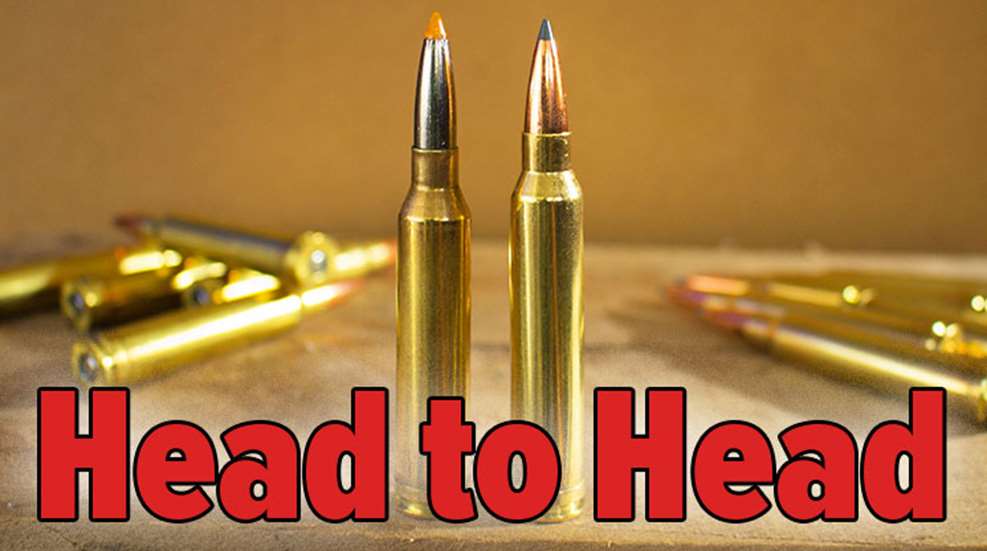
The popularity of magnum cartridges is undeniable; Americans have had a long love affair with speed, and I doubt that will end anytime soon. Virtually every one of our bullet diameters have received the magnum treatment at one point in time or another, be it from the Weatherby family of cartridges, or the dynamic duo of Winchester and Remington, or even the boutique shops like Lazzeroni. The debate rages on as to whether or not the additional speed is necessary, with both sides of the fence making valid points.
Nonetheless, the magnums are extremely popular, and the two cartridges herein are possibly the most popular of all. No surprise there, as both the 7mm and .308″ bore diameters have long been heralded as the two most versatile available, giving hunters all sorts of flexibility regarding the game animals they will handle. The post-World War II era saw a return to the hunting fields, and a wave of cartridge development followed, with Winchester releasing the .264, .338 and .458 Winchester Magnums in the 1950s, all based on the belted Holland & Holland case shortened and blown out. Norma followed suit, releasing their .308 Norma Magnum in 1960, giving the same ballistics as the longer .300 H&H Magnum, in a long-action cartridge. Within three years, we’d see the two most popular magnums appear on the shelves.
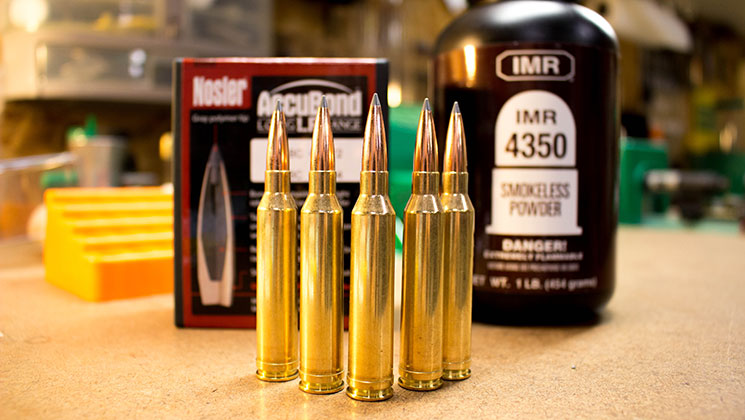
The 7mm Remington Magnum was the first on the scene, released in 1962 in conjunction with the new Model 700 rifle. It gave velocities previously unattainable—at least from an American cartridge—in the 7mm bore diameter, and the new rifle certainly didn’t hurt the popularity. It followed the Winchester recipe, with a 2.50″ case, but wasn't exactly an original design. You see, just as the famous .375 H&H Magnum came onto the scene, Holland & Holland released the .275 H&H Magnum, with a 2.50″ case and the H&H Belt. The velocities produced were understandably lower than those of the 7mm Remington Magnum—as the powders available in 1912 certainly weren’t the same as those in 1962—but the cartridges are nearly identical, with the H&H design having a bit more taper. The 7mm Remington Magnum drives the wide variety of 7mm bullets, from 120 to 175 grains, at respectable velocities. With comparable bullet weights, the 7mm Mag. will supersede the velocities of the .30-06 Springfield; though the ’06 can use heavier bullets, the 7mm of equal weight will offer a better Sectional Density. The 7mm Remington Magnum will send a 160-grain bullet—a good all-around choice for nearly all North American game—at 3000 fps. Remington’s 7mm Mag. unseated the .264 Winchester Magnum rather quickly, becoming the darling of Western hunters.
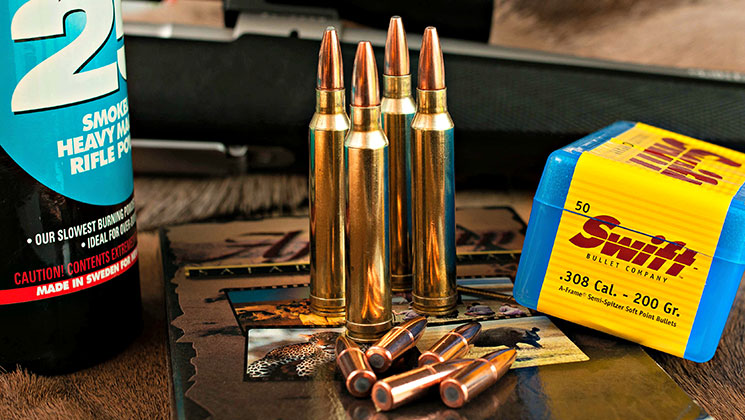
Winchester, seeing the wisdom of the .308 Norma Magnum and an opportunity to produce a .30 caliber magnum with the Winchester moniker, extended the case length from 2.50″ to 2.62″, shortening the neck length to 0.264″ to give plenty of case capacity while still fitting in a long-action receiver. Driving a 180-grain bullet to a muzzle velocity of 2960 fps, Winchester’s .300 Mag. is a hard hitting and accurate cartridge, offering a 150 fps velocity increase over the .30-06 Springfield. It betters the velocities of the .300 H&H Magnum; though it falls short of the performance of the .300 Weatherby Magnum, the Winchester variety can be housed in the standard long-action receiver, which is lighter and less expensive to produce.
Which makes the better choice for the hunter? This is a tough one, as the comparisons between the 7mm bore diameter and the .308″ need to be carefully examined. Both camps have fervent followers, and both are highly effective in the game fields. My opinion is that the choice may heavily depend on what game animals you intend to hunt, allowing the bullet weights available dictate the logical choice. Comparing the two, the .300 Win. Mag. has an obvious weight advantage, topping out at 240 grains. The logical bottom end for the .300 Winchester ranges between 130 and 150 grains, depending on bullet construction; the 7mm Rem. Mag. can use bullets of 120 grains, but things usually top out at 175 or 185 grains. If you like the idea of using one of these calibers for the bigger game animals, like Alaska/Yukon moose or brown/grizzly bear, I feel the .300 Win. Mag. gives an advantage in bullet weight. If you feel that the largest animals are better served with a larger bore altogether, then it becomes nearly a dead heat between the two cartridges. Both make a great choice for elk, deer, African plains game and smaller bears, and both have the capability to be made in a mountain rifle for sheep and goats.
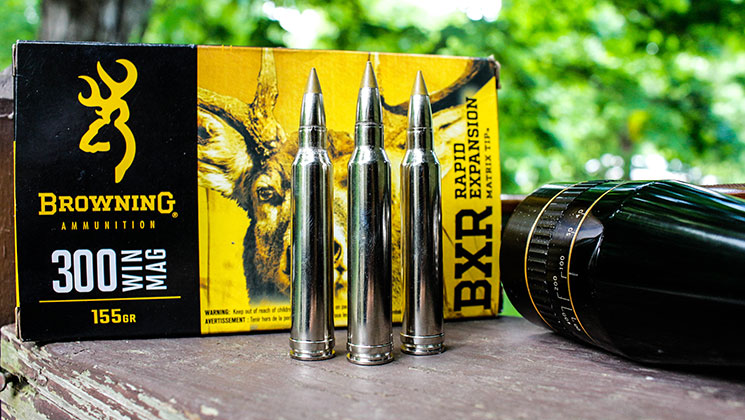
I have found the recoil between the two to be very similar, with rifle weight playing a larger part than the cartridge does. The .300 Winchester Mangum has more ammunition available—as it leads a dual life, in both the hunting world and long-range target world—but every major ammunition manufacturer offers a selection of 7mm Remington Magnum ammo. Both are relatively easy to handload for those who head down that road, running on a good slow-burning powder and a large rifle magnum primer, and both exhibit excellent accuracy with both factory and handloaded ammunition.
Personally, I've always been a fan of .30 caliber bullets, and the .300 Winchester Magnum is one of my favorite hunting cartridges. It’s been all over with me on hunting trips, including Africa, Canada and here at home. I’ve used it with lead-free 150-grain bullets for African plains game, 180-grain bullets for a good number of species and 220-grain round nose bullets for bear and deer. I’ve found that the versatility of bullet choice gives the .30s an advantage—if you appreciate the “one-gun” approach. Again, there are no flies on a 7mm. Rem. Mag., and if you feel the 7mm offers an advantage, well, there’s a whole lot of game that aren’t available for comment as a result of a 7mm bullet. But, for me personally, I smile every time I reach for the .300 Winchester Magnum.
Looking for previous installments of our "Head to Head" series? We've got you covered.
• .243 Winchester vs. 6mm Remington
• 7x57mm Mauser vs. 7mm-08 Remington
• .25-06 Remington vs. .257 Weatherby Magnum
• .338 Winchester vs. .375 H&H Magnum
• .30-30 Winchester vs. .35 Remington
• .257 Roberts vs. .250-3000 Savage
• .270 Winchester vs. .280 Remington
• .35 Whelen vs. 9.3x62mm Mauser
• .416 Rigby vs. .416 Remington Magnum
• .308 Winchester vs. .30-06 Springfield
• .22 Nosler vs. .224 Valkyrie
• .300 Win. Mag. vs. .300 WSM
• .223 Remington vs. .22-250 Remington













